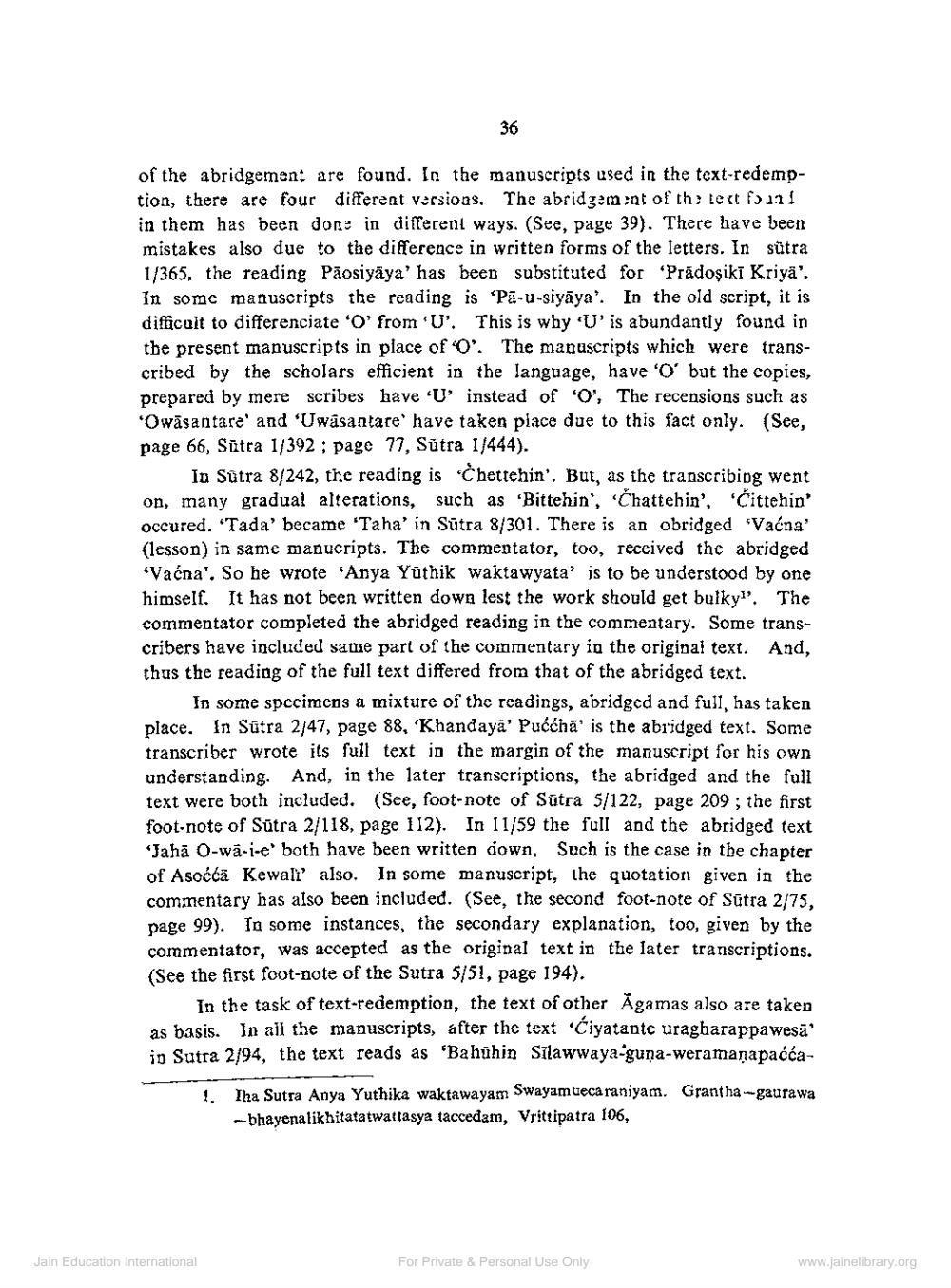________________
36
of the abridgemant are found. In the manuscripts used in the text-redemption, there are four different versions. The abridgement of the text fɔ and in them has been done in different ways. (See, page 39). There have been mistakes also due to the difference in written forms of the letters. In sütra 1/365, the reading Pãosiyāya' has been substituted for 'Pradoşiki Kriya". In some manuscripts the reading is 'Pa-u-siyāya'. In the old script, it is difficult to differenciate 'O' from 'U'. This is why 'U' is abundantly found in the present manuscripts in place of 'O'. The manuscripts which were transcribed by the scholars efficient in the language, have 'O' but the copies, prepared by mere scribes have 'U' instead of 'O', The recensions such as 'Owäsantare' and 'Uwasantare' have taken place due to this fact only. (See, page 66, Sutra 1/392; page 77, Sütra 1/444).
In Sūtra 8/242, the reading is Chettchin'. But, as the transcribing went on, many gradual alterations, such as Bittehin', 'Chattehin', 'Cittehin occured. 'Tada' became "Taha' in Sutra 8/301. There is an obridged 'Vaćna (lesson) in same manucripts. The commentator, too, received the abridged "Vaćna'. So he wrote 'Anya Yüthik waktawyata' is to be understood by one himself. It has not been written down lest the work should get bulky". The commentator completed the abridged reading in the commentary. Some transcribers have included same part of the commentary in the original text. And, thus the reading of the full text differed from that of the abridged text.
In some specimens a mixture of the readings, abridged and full, has taken place. In Sutra 2/47, page 88, 'Khandaya' Puććha' is the abridged text. Some transcriber wrote its full text in the margin of the manuscript for his own understanding. And, in the later transcriptions, the abridged and the full text were both included. (See, foot-note of Sutra 5/122, page 209; the first foot-note of Sutra 2/118, page 112). In 11/59 the full and the abridged text "Jaha O-wa-i-e both have been written down, Such is the case in the chapter of Asocća Kewal' also. In some manuscript, the quotation given in the commentary has also been included. (See, the second foot-note of Sūtra 2/75, page 99). In some instances, the secondary explanation, too, given by the commentator, was accepted as the original text in the later transcriptions. (See the first foot-note of the Sutra 5/51, page 194).
In the task of text-redemption, the text of other Agamas also are taken as basis. In all the manuscripts, after the text Ćiyatante uragharappawesä in Sutra 2/94, the text reads as 'Bahthin Silawwaya-guna-weramaṇapaćća
Jain Education International
1. Iha Sutra Anya Yuthika waktawayam Swayamuecaraniyam. Grantha-gaurawa -bhayenalikhitatatwattasya taccedam, Vrittipatra 106,
For Private & Personal Use Only
www.jainelibrary.org




